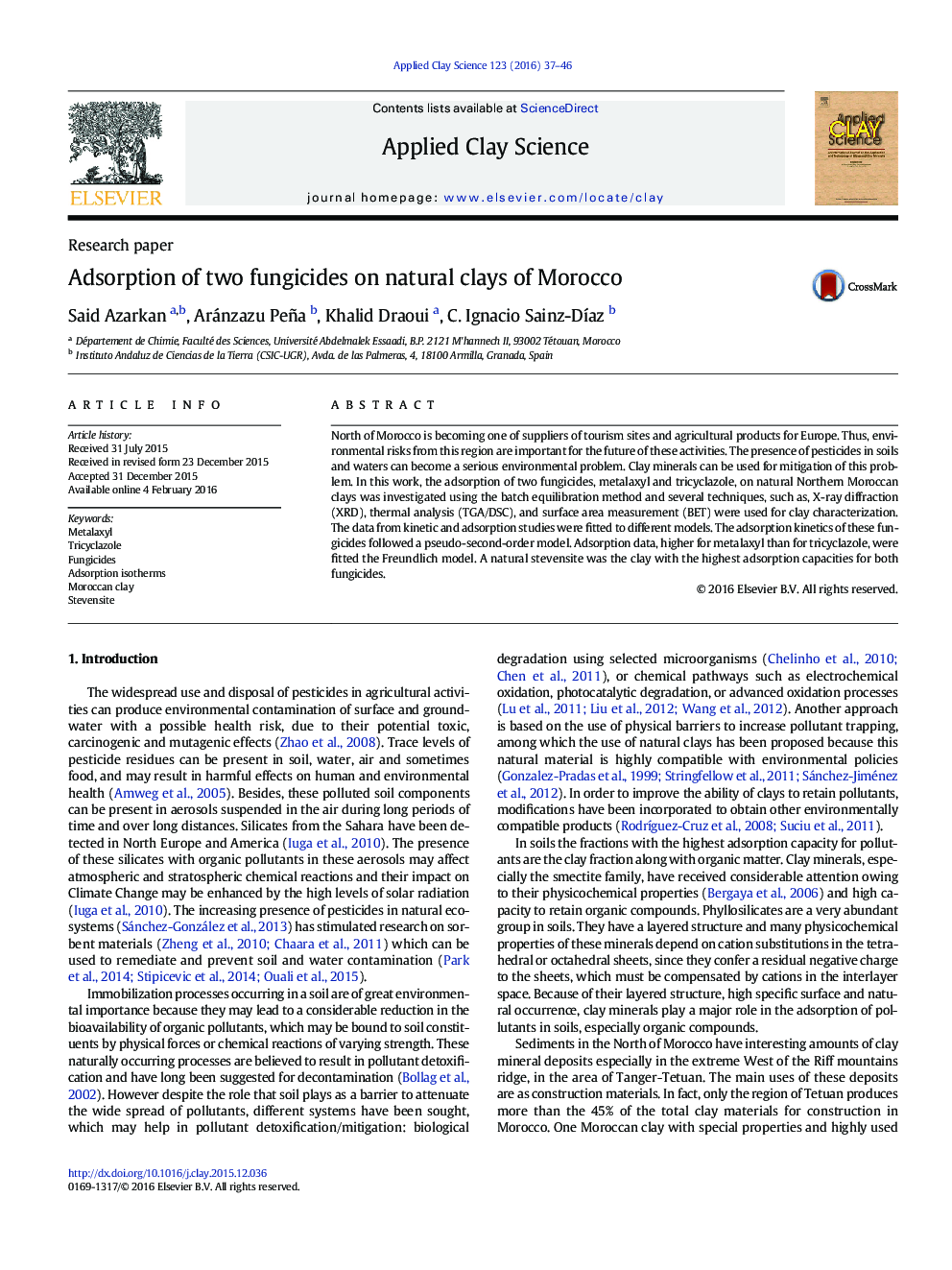| کد مقاله | کد نشریه | سال انتشار | مقاله انگلیسی | نسخه تمام متن |
|---|---|---|---|---|
| 1694115 | 1519061 | 2016 | 10 صفحه PDF | دانلود رایگان |
• The adsorption of these fungicides is onto the external surfaces of clay minerals.
• Metalaxyl is absorbed more likely in swelling clay minerals than Tricyclazole.
• Stevensite from Ghassoul absorbs more fungicides than other clay samples.
• The adsorption of polar, metalaxyl, and aromatic, tricyclazole, fungicides has been compared.
• Ghassoul clay can be useful for remediating soils and filtering wastewaters.
North of Morocco is becoming one of suppliers of tourism sites and agricultural products for Europe. Thus, environmental risks from this region are important for the future of these activities. The presence of pesticides in soils and waters can become a serious environmental problem. Clay minerals can be used for mitigation of this problem. In this work, the adsorption of two fungicides, metalaxyl and tricyclazole, on natural Northern Moroccan clays was investigated using the batch equilibration method and several techniques, such as, X-ray diffraction (XRD), thermal analysis (TGA/DSC), and surface area measurement (BET) were used for clay characterization. The data from kinetic and adsorption studies were fitted to different models. The adsorption kinetics of these fungicides followed a pseudo-second-order model. Adsorption data, higher for metalaxyl than for tricyclazole, were fitted the Freundlich model. A natural stevensite was the clay with the highest adsorption capacities for both fungicides.
Journal: Applied Clay Science - Volume 123, April 2016, Pages 37–46
